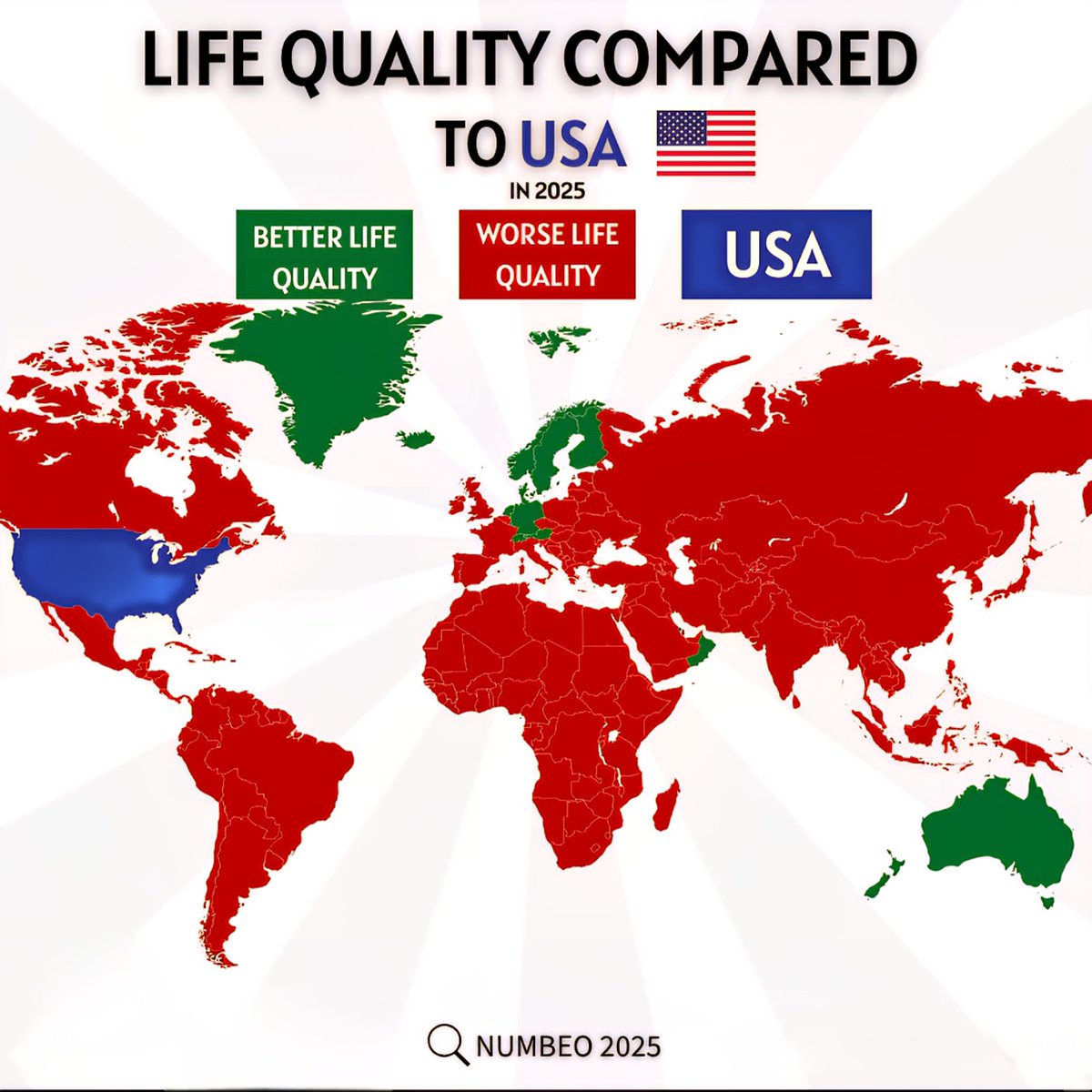Select Language:
The State of Global Living Standards Compared to the United States in 2025

1. Canadians Outpace Americans in Overall Happiness
In 2025, Canada continues to hold a slight edge over the U.S. when it comes to national happiness indices. Canadian residents report higher levels of life satisfaction, driven largely by robust healthcare systems, a strong social safety net, and a focus on community well-being. While the United States remains a global economic powerhouse, this happiness gap points to Americans valuing work-life balance, social cohesion, and mental health support more intensely.
2. European Countries Lead in Healthcare Quality and Accessibility
Sweden, Switzerland, and Germany are recognized as having the best healthcare systems in the world. These nations consistently outperform the U.S., where despite high healthcare spending, issues with affordability and access persist. In 2025, European countries benefit from universal coverage models, offering citizens comprehensive services without the financial burdens often faced in American healthcare.
3. Nordic Nations Rank Highest in Environmental Sustainability
Norway, Denmark, and Finland hold top spots among nations prioritizing environmental policies. Their investments in renewable energy, strict pollution controls, and conservation efforts have made them leaders in climate responsibility. The United States has made strides, but still lags behind due to inconsistent policy implementation and regional disparities, especially in areas prone to environmental degradation.
4. Work-Life Balance Remains Stronger in Asia and Scandinavia
In 2025, countries like Japan, South Korea, and the Scandinavian nations excel in providing their populations with optimal work-life balance. Longer vacation periods, shorter workweeks, and employee rights contribute to higher quality of life. Conversely, Americans report longer working hours and increased workplace stress, negatively impacting their overall life quality.
5. Educational Achievements and Opportunities Vary Globally
South Korea, Canada, and Finland lead global rankings in education quality. These nations emphasize equitable access to quality education, which correlates with higher life satisfaction. In contrast, the United States faces criticism over educational disparities, with rural and low-income areas lagging behind in academic resources and outcomes.
6. Public Safety and Crime Rates Influence Quality of Life
Iceland, Japan, and New Zealand are noted for their low crime rates, which substantially contribute to residents’ sense of safety and overall happiness. The U.S., despite being a global economic leader, grapples with higher crime rates in various cities, undermining efforts to provide a universally high quality of life.
7. Cost of Living and Housing Affordability Affect Well-being
In 2025, nations like Portugal and Spain are praised for affordable living costs, accessible housing, and strong social supports, resulting in higher general happiness levels. In contrast, American urban areas continue to experience skyrocketing housing prices, making affordability a significant challenge and often leading to increased financial stress among residents.
8. Global Social and Cultural Connection Enhances Well-being
Countries like the Netherlands and Australia excel at fostering social bonds and community participation, which greatly enhance overall life pleasure. The United States, known for its diverse and vibrant culture, still faces hurdles in community cohesion and social trust, factors that impact mental health and life satisfaction.
9. Technological Advancements Improve Quality of Life Worldwide
Smart cities and digital healthcare innovations are widely implemented in South Korea, Singapore, and the UAE. These advancements facilitate efficiency, accessibility, and personalized services, boosting quality of life. While the U.S. is a leader in tech innovations, uneven adoption and digital disparities persist, particularly in marginalized communities.
10. Income Inequality and Social Equity Remain Critical Challenges
Nordic countries maintain low levels of income inequality due to progressive taxation and social welfare policies, correlating with higher life satisfaction. The U.S. continues to experience significant income gaps, which contribute to disparities in health, education, and overall well-being, affecting the national happiness landscape.
In summary, as of 2025, the global landscape for quality of life is marked by remarkable variations. While the United States remains influential economically and culturally, countries emphasizing universal healthcare, environmental sustainability, healthcare accessibility, and social equity are leading the way in living standards. Continuous global efforts to address disparities and invest in holistic well-being remain crucial for improving life quality worldwide.






